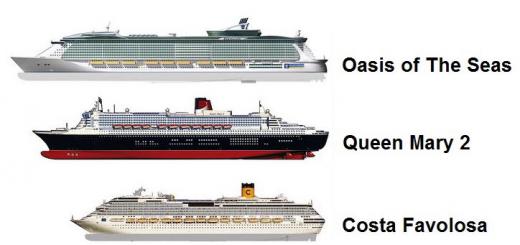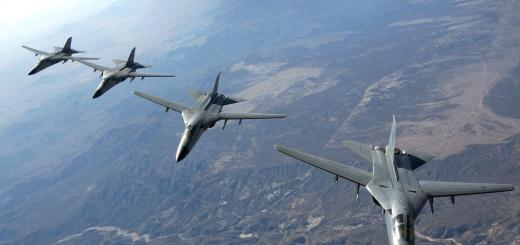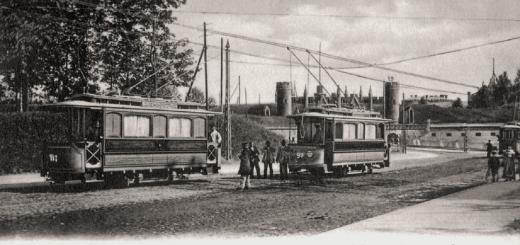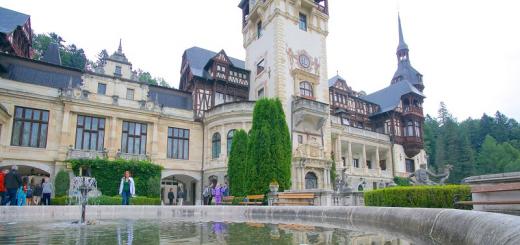An enterprise will be opened to create a Russian-Chinese wide-body passenger aircraft... What will this machine be like and why is its production moved to China?
The liner should make its first flight in seven years, and in ten years it is planned to start delivering the machine to customers. It is assumed that the production of the aircraft will be carried out in China, development - in. The cost of the program for this moment estimated at $ 13–20 billion.
Earlier it was reported that for this project in Russia a PD-35 engine with a thrust of 35 tons is being created, which will take at least ten years, so the first aircraft will be equipped with General Electric or Rolls-Royce engines.
In Russia, the future airliner so far bears the technical name SHFDMS (wide-body long-range aircraft), in China - C929. In terms of performance, it will have to outperform Airbus and Boeing aircraft by at least 10%.
Chinese money
It is important to clarify that "production in China" does not mean that the aircraft will be completely manufactured in China. In Russia, it is planned to create a composite wing, mechanization and avionics, in China - the fuselage and tail. But the assembly of all the elements will be carried out at an aircraft plant in the suburbs of Shanghai.
The key question for Russia is how the domestic aviation industry will benefit from such a distribution of roles. The head of the UAC, Yuri Slyusar, explained this decision by the fact that it is the Celestial Empire that is the main sales market: several hundred cars of this class will be needed here in the next 20 years. But there are other reasons as well.
“It is quite obvious that the more a partner is willing to invest his own funds, the more opportunities he will have to configure the project for himself,” says aviation expert Oleg Panteleev.
In his opinion, in the project, each party has assumed those obligations in which it is most competent. Russia has a developed design school aircraft from aerodynamics and strength to composite wing technology, and China is able to build a powerful production site. In addition, one should not discount the fact that China is not under sanctions, which means that it can freely purchase some units and equipment abroad.
Chinese compromise
Cooperation in the high-tech sphere is always a complex process, which has its pros and cons. The advantages are that the funding falls on the shoulders of two states, not one.
Plus, everyone on the project does what they do best, so you don't have to reinvent the wheel. Almost all civil aircraft, including those of Boeing and Airbus, are being created on this principle.
But there are also disadvantages. First, for different countries airliners with different characteristics are needed, and this issue required lengthy negotiations. The developed characteristics (280 seats, flight range - up to 12 thousand km) can be called a compromise.
In Russia, most aircraft are designed for medium-range routes - from two and a half to six thousand kilometers. In China, on the contrary, an airplane with a capacity of 400-500 seats is needed.
Secondly, with the joint creation of an aircraft, the issue of copyright arises. “There are two options for dividing the rights to this car. Either 50/50, and then we have a mutual dependence. Or there is an option when both parties own 100% of the rights to the liner.
That is, each side can independently upgrade and manufacture this aircraft. It is not yet clear how this issue has been resolved, ”said Roman Gusarov, head of the AVIA.RU portal.
But the most important question is how the issue of copyright for the PD-35 engine will be resolved. “The transfer of technology to China is unlikely to take place. There are single manufacturers of aircraft engines in the world, and it is not accepted to transfer such technologies, ”Gusarov said.
It is important to note that the PD-35 engine is also being created for a heavy transport aircraft, and this will reduce the cost of its creation. In addition, it is likely that some of the design solutions used in the Russian-Chinese wide-body will migrate to a new transport vehicle for the Ministry of Defense.
The ninety-sixth will live
Our country has experience in creating wide-body aircraft, and this experience is unique and tragic. Those who were involved in the creation of the Il-86 in the 1970s are rightfully proud of this. At that time, without exaggeration, the entire industry of the country worked on this machine, and in many respects it was the rupture of technological chains after the collapse of the USSR that put an end to the development of the project.
Although not without lobbying their interests by foreign companies, which by hook or by crook tried to "squeeze" a competitor out of the market.
As a result, the car did not go into mass production, and instead of it, used Airbus A310, Boeing 747, Boeing 767 appeared on domestic airlines. Today, several Il-86s are used by Russian departments, but since 2011 this car does not fly on passenger flights. ... A total of 79 aircraft out of 106 produced were cut for scrap.
As for the first long-range Il-96, created on the basis of the Il-86, he was a little more fortunate. First, this plane became the president's plane (board number one). At the moment, the Rossiya flight squadron includes seven Il-96-300 and four Il-96-300PU. Secondly, six aircraft are in operation Russian airlines and five - Cuban Cubana.
The aircraft modernization was announced several times: in October 2016, Ilyushin announced that it would create a new aircraft number one for the head of state on the basis of the Il-96-400M. And on April 14, 2017, it was announced that the AK im. S. V. Ilyushin received an order to create a modernized Il-96-400M.
The company said in a statement that this “will contribute to solving the problems of providing transport accessibility Russian regions, meeting the need for long-haul aircraft of domestic production, as well as technological independence Russian Federation».
“For strategic reasons, Russia is forced to have its own wide-body aircraft, which is being built entirely in our country, even when working on joint projects. It can be produced in the form of a transporter, a tanker or a passenger liner, ”Roman Gusarov believes.
Gusarov noted that one or two aircraft will be produced per year, which will not be too costly for the budget and will not interfere with work on a new aircraft.
No step back
One of the main problems of the domestic aviation industry recent years- the lack of young designers who would have experience working on both military and civilian aircraft and helicopters.
This is due to the fact that in the 1990s and early 2000s, the development of new technology in our country was practically not carried out, and therefore university graduates, at best, went to foreign companies, and at worst, they generally got a job outside their specialty.
In addition, the Soviet system itself implied the development of several machines in different design bureaus, which means that after 1991, one design bureau could be loaded with work, while the other was idle.
Today in Russia, the so-called UAC Design Bureau is being created, which will unite the efforts of engineers and designers from all over the country.
The creation of such a system is a rather difficult task associated with the protection of communication channels, but it was solved: for the first time in the history of Russian aviation, several design bureaus are working on the modernization of the Tu-160 strategic bomber. Sukhoi Design Bureau, RSK MiG, Irkut Corporation, TANTK im. G.M.Beriev, Ilyushin Design Bureau, MAI.
A promising family of wide-body long-haul aircraft is called CR 929. The basic version is CR 929-600, the younger version is CR 929-500, and the older version is CR 929-700.

Latin letters C and R designate participants: С - China, R - Russia. CR is also the first two letters of the name of the Russian-Chinese enterprise China-Russia Commercial Aircraft International Corporation (CRAIC), which operates the program of a promising wide-body long-range aircraft.
The ceremony, which announced the name of the liner and presented its future livery, was held at the headquarters of the China Civil Aircraft Corporation (COMAC) in Shanghai. Our country was represented by the Deputy Head of the Ministry of Industry and Trade Oleg Bocharov and the President of the United Aircraft Building Corporation (UAC) Yuri Slyusar. From the side of China were the Deputy Minister of Industry and Informatization of the People's Republic of China Xin Guobin and the Chairman of the Board of Directors of COMAC He Dongfeng. The event was also attended by the President of the Russian-Chinese joint venture CRAIC Guo Bozhi.
Commenting on the choice of the main numbers of the future airliner, Yuri Slyusar explained: "In Chinese culture, the number 9 means eternity. We are strategically building the concept of a single proposal for civil aircraft with the name and numbering. For example, the CR 929 family reflects the opportunity to form an offer for airlines in conjunction with the Chinese narrow-body project From 919, and the numbering of each member of the family continues the line of UAC commercial aircraft offerings, from MS-21-200 / 300/400 to CR 929 - 500/600/700 ".
The global demand for wide-body aircraft in the period 2023-2041 may be at least 8,200 airliners
COMAC Chairman He Dongfeng said: "The next 20 years will be a strategically important period in the development of the global civil aviation industry. We will do our best to make CR 929 an example of successful cooperation between Russia and China in the modern world."
The parties also unveiled the CRAIC joint venture logo used in the liner's livery. It consists of two equal wings that move evenly from left to right. The colors of the wings symbolize the project participants: red - China, blue - Russia.
Joint work on a promising aircraft engine in the global aircraft industry is exceptional. Engines are not made by all countries and technologies are trying not to share. It is assumed that the Russian-Chinese engine will have a thrust of at least 35 tons, and will become one of the most modern in the implementation of scientific and technical groundwork.
The work on the project is proceeding very dynamically. A memorandum on the possibility of creating such an aircraft was signed in April 2014. Fundamental documents - June 25, 2016 within the framework of Vladimir Putin's official visit to China. At the 20th International Aviation and Space Salon China Airshow 2016, on November 2, they presented the appearance of a Russian-Chinese liner. And already in September of this year, the UAC signed a memorandum of cooperation with the Chinese engine-building company AECC on the joint development of a gas turbine engine.
It is assumed that the first firm contract for the CR 929 can be concluded as early as 2019, the first flight in 2023, and the start of deliveries in 2026.
If the project can be implemented according to plan, then it will be a real breakthrough in civil aircraft and a severe blow to the monopoly of Airbus and Boeing, which today control the entire world market for long-haul wide-body aircraft.
The CR 929 is said to be 15 percent more efficient than the Boeing 787 Dreamliner and Airbus 350. The aircraft is slated to incorporate the latest advances in aerodynamics and composite materials.
2023 is slated as the year that the new aircraft will take its wings
Russia and China will be equally responsible for the design and construction of the aircraft.
Experts believe that the global demand for wide-body aircraft in the period 2023-2041 will be at least 8,200 units. The largest market will be China, with a demand for at least 1,500 liners. And Russia, taking into account the size of our country, CR 929 is very useful.
Everything is on schedule
Implementation of the wide-body long-haul program the plane goes according to the schedule, the head of the Ministry of Industry and Trade Denis Manturov stated in an official statement.
"The concept of the family has been developed, the characteristics of the aircraft have been determined. Immediate plans are the transition of the program to preliminary design and the stage of requesting proposals for suppliers of systems and equipment," the minister said.
"The aircraft being created immediately fits into the global context for a full-fledged presence in the world market. At the same time, we are creating a single project, forming a single positioning of the new aircraft with our Chinese colleagues," explained Denis Manturov.
Neither China nor Russia can yet offer an engine to their new brainchild. Photo from the site www.uacrussia.ru
Rolls-Royce is set to supply engines for the future Chinese-Russian long-range CR929 aircraft. Neither Russia nor China has yet competitive engines for this airliner, which will be assembled in China.
In December 2017, CRAIC, a joint venture between the Russian United Aircraft Corporation (UAC) and the China Civil Aircraft Corporation (COMAC), requested potential suppliers of aircraft components to make an offer by the end of May.
“The CR929 is a great aircraft. We want to be the engine supplier, ”said Rolls-Royce spokesman Paul Stein.
Russia and China want to create a wide-body long-haul liner with a capacity of 250-300 passengers, which is supposed to be able to compete with the products of European Airbus and American Boeing. The cost of the program is estimated at $ 16–20 billion. The first flight of the aircraft is expected in 2025.
Experts estimate the market for long-haul aircraft in the next 20 years at $ 2.3 trillion, with the help of CR929, the RF and the PRC want to keep a part of this market for themselves. This can only happen if the Russian-Chinese plane is more efficient than the Boeing 787 and Airbus A350.
The UAC calculated that by 2045, air carriers will need more than 7 thousand of these aircraft, and only China will need 15% of them, another 30% will be bought by other countries of the Asia-Pacific region. The demand on the Russian market will not exceed 5%. CR929 is still at the preliminary design stage.
His biggest problem is probably the engine. It is known that there are only four countries in the world that can make suitable power plants: the USA, Great Britain, France and the Russian Federation. In addition to domestic companies, only firms from the United States (Pratt & Whitney, General Electric, Honeywell), England (Rolls-Royce) and France (Snecma) possess full-cycle technologies for creating modern engines for civil aviation. China's long-term efforts have so far not been successful in this area. Analysts draw attention, for example, that the Chinese quickly copied and equipped the Russian Su-27 fighter with their own systems, releasing it under the J-11 index, but they did not succeed in copying the engine of this aircraft, so China is still forced to purchase this one for a long time. the most modern engine in Russia.
In Russia, however, everything is not easy with engines either, 20 years of downtime in this area affects. Only recently, for the MS-21 medium-range aircraft, the PD-14 was created - the first new aircraft engine in Russia after the collapse of the USSR, and it became the first domestic aircraft engine of the 5th generation. The main technical difference from previous generations is the gas temperature: if the first generation engines, which, by the way, appeared in the late 1940s, did not exceed 1150 degrees, then the turbine blades of the 5th generation engines, the first samples of which appeared in the West in the mid-90s -s, operate at a temperature of 1900 degrees. However, in reality, there is no PD-14 serial engine yet. And no one knows for sure when he will appear. Therefore, the Russian MS-21 flies not on domestic, but on foreign engines.
Modern engines are lighter, cleaner and more economical. It is expected that the medium-range MS-21 equipped with such engines will consume 15 g of fuel per passenger per 1 km. For comparison, the most common Soviet aircraft Tu-154M this figure was 27.5 g, it burned 5.3 tons of fuel per hour. The more modern Tu-204-120 needs 19.1 g per passenger-kilometer, and the Airbus A319-100 needs 20.5 g.
However, as often happens, the engine refinement lags behind the aircraft itself, and the MS-21 is still being certified with Pratt & Whitney engines.Ravil Khakimov, a representative of the Aviation Industry Committee of the Russian Engineering Union, said PD-14 will be involved in this work from 2019. Now it is already obvious that the same will happen with the CR929, the Russian-Chinese brainchild will most likely fly out of the nest in Rolls-Royce or General Electric. The fact is that the PD-35 is a completely unique task for Russian engineering, its thrust should be over 30 tons (for the PD-14, respectively, 14 tons), and there are still such machines neither in the USSR, nor, of course, in the Russian Federation. did not.
The total cost of the PD-35 program is estimated at 180 billion rubles. Of these, about 60 billion will be investment costs (in Perm Territory actually a new enterprise is being built to create an engine, in Russia there are simply no stands for testing engines of this size and such thrust). Thus, 120 billion rubles will be allocated directly to the creation of the engine and the work of the designers. It is expected that the so-called PD-35 demonstrator sample will be created in 2023, and the Perm plant will be able to start mass production in 2028. In addition to the CR929, this giant is planned to be installed on promising military aircraft.
As for the Rolls-Royce proposal, it is most likely about the main modern model of this enterprise - the Trent 1000, which can be adapted for a specific aircraft, when the Russian Federation and the PRC decide on its final appearance and technical characteristics... However, in the company's lineup there are already monsters with a thrust far exceeding 30 tons.For example, the thrust of the basic version of the Trent XWB-84, which is installed on the Airbus A350-900, is 38 tons. ) certified the most powerful engine of the family of turbofan engines Trent XWB-97 with a thrust of almost 44 tons. This unit is intended for installation on wide-body Airbus A350-1000 aircraft.
The Russian-Chinese project to create a wide-body long-range aircraft was named CR 929. According to the United Aircraft Corporation (UAC), CR 929 is the name of a whole family of Russian-Chinese-made wide-body aircraft. The letters C and R designate the project participants - China and Russia, as well as the first letters of the CRAIC joint venture, which is the operator of the project.
The naming ceremony took place in Shanghai at the headquarters of the China Civil Aircraft Corporation. The joint venture logo was shown, representing two equal wings moving from left to right. The red wing symbolizes China, the blue one - Russia.
According to the UAC, the basic version will be called CR 929-600, the younger version - CR 929-500, and the older version - CR 929-700.
The joint Chinese-Russian project to create a wide-body long-haul aircraft (SHFDMS) fundamentally negates the entire import substitution program, which Russia had previously announced, Viktor Gorbachev, general director of the Association of Civil Aviation Airports of Russia and the CIS, is sure. Moreover, as the expert told the Kolokol Rossii newspaper, this program carries a number of difficulties that may threaten the country's national security. Joint projects of such capacity, given that aircraft construction is an area of double importance, where technologies are also used in the defense sphere, are of strategic importance for the country, which means that it is extremely dangerous to build aircraft with anyone - even with a best friend, he noted. expert.
“Not so long ago we were in fairly good relations with the European Union and the United States, however, given the growing power of China in the international market and its global ambitions, today no one can predict how Beijing might behave in relation to the Russian Federation and in a joint large-scale aviation project. Today Russia has found itself in an extremely uncomfortable situation with the Sukhoi Superjet-100 aircraft, where about 75 - 80 percent are imported components, and in another medium-range aircraft of the MC-21 project, the percentage of foreign components is about 60 percent. Strategically, these are not life machines that completely depend on the geopolitical situation and relations between the West and the Russian Federation, ”the source said.
In the basic configuration, the CR 929 airliner will be able to carry 280 passengers. The assembly of the aircraft will take place in Shanghai, while the design bureau and engineering center will be located in Russia at the UAC enterprises.
“Today, neither Russia nor China have technologies in civil aviation that could seriously compete with the world's aviation giants such as Airbus and Boeing. While in military aviation Russian designers and engineers are still able to withstand the competition with dignity, in civil aviation our technologies are very outdated. After the collapse of the Soviet Union, the country's leadership decided that the country did not need its own production of civil aircraft, because it was more profitable and cheaper to buy ready-made aircraft abroad, but in reality all this turned out to be a big problem for Russia. If the Russian Federation makes every effort today, it will achieve a significant result no earlier than in 20 years, but we must remember that the leaders of the aviation structure will not stand still, ”Viktor Gorbachev is sure.
Formerly vice president of marketing for the company " Civil aircraft Sukhoi ”Tamara Kakushadze said that it will take about 7 years from the launch of the SHFDMS program to the first flight, and the first aircraft will be delivered to the customer in about 10 years. According to her, we have a risk-sharing partnership with our Chinese partners, which allows us to reduce costs and risks while implementing such an ambitious program. We localize the engineering center and developments in Russia, and bring production, sales and after-sales services closer to the anchor primary sales market - localize them in China.
The Russian-Chinese wide-body long-range CR 929 aircraft has been woven into the Russian policy of recent years to restore the status of an aviation power, which it was until 1990, said Oleg Smirnov, a member of the Public Council of the Federal Air Transport Agency, Honored Pilot of the USSR. According to the interlocutor of the Kolokol Rossii publication, the country's leadership has already done a lot in this direction, creating the Superjet-100, the Il-114 aircraft has been launched for operation on local airlines instead of the An-24, as well as the MS-21, which is now being tested.
“While the Russian government was dozing and collapsing the aviation government, China became the leading economy in the world and partially moved Airbus production to its territory, so the Chinese could get hold of modern European technologies. Moreover, the PRC is already producing several aircraft models, in particular, Chinese designers have redesigned the An-24, for which a line of international buyers is already lining up. However, despite this, the Russian intellectual contribution to the CR 929 aircraft will prevail, ”Oleg Smirnov believes.
A mock-up of the wide-body CR 929 aircraft was demonstrated in the fall of 2016 at the Chinese Airshow China-2016 exhibition. According to some reports, Russia and China are planning to jointly invest $ 20 billion in the production of the aircraft, of which $ 13 billion will be spent on the development and creation of production facilities, and $ 7 billion on the production of spare parts and marketing.
According to the Ministry of Industry and Trade, by the end of 2018 it is planned to “develop and approve a draft design” of a wide-body long-range aircraft. due to the maximum volumes provided for the state program "Development of the aviation industry for 2013-2025."
The family of the Russian-Chinese wide-body long-range aircraft was officially named CR929. The naming ceremony took place on September 29 at the COMAS headquarters in Shanghai. Latin letters C and R designate participants: С - China, R - Russia. CR is also the first two letters of the name of the Russian-Chinese enterprise China-Russia Commercial Aircraft International Corporation (CRAIC), which is the operator of the new aircraft program.
PJSC "United Aircraft Corporation" and "China Civil Aircraft Corporation" (COMAC) solemnly assigned the name to a wide-body long-range aircraft of a new generation, and also presented the liner livery.
The first flight of the head prototype of the SHFDMS is scheduled for 2021, and the start of serial deliveries of the SHFDMS is expected in 2025–2027.
A memorandum on the joint creation of the SHFDMS was signed by the Russian and Chinese sides in April 2014. The documents on the program for the creation of a new wide-body long-haul passenger aircraft were signed on June 25, 2016 during the official visit of the President of the Russian Federation Vladimir Putin to China, including an agreement on the establishment of a joint venture on a partisan basis necessary for the implementation of the program, which will be registered at the headquarters. SOMAS apartment in the free trade zone in Pudong district of Shanghai.
The first flight of the head prototype of the SHFDMS is scheduled for 2021, and the start of serial deliveries of the SHFDMS is expected in 2025–2027, depending on the expected number of new technological solutions selected during the development. A joint engineering center for aircraft design will be set up in Russia. and the serial production itself will have to be carried out at the COMAS plant in Pudong (built for the production of the promising Chinese medium-range aircraft C919).

The parties also unveiled the CRAIC joint venture logo used in the liner's livery. It consists of two equal wings that move evenly from left to right. The colors of the wings symbolize the project participants: red - China, blue - Russia.

At the ceremony, the Russian side was represented by Deputy Minister of Industry and Trade of the Russian Federation Oleg Bocharov, President of PJSC UAC Yuri Slyusar. China was represented by the Deputy Minister of Industry and Informatization of the People's Republic of China Xin Guobin and the Chairman of the Board of Directors of COMAC He Dongfeng. The President of the joint venture China-Russia Commercial Aircraft International Corporation (CRAIC) Guo Bozhi also took part in the event. ⠀
Commenting on the choice of the main numbers of the future liner, Yuri Slyusar explained:
"In Chinese culture, the number 9 means eternity. We are strategically naming and numbering to jointly build the concept of a single offer for civil aircraft. For example, the CR 929 family reflects the ability to form an offer for airlines in conjunction with the Chinese narrow-body project C 919, and the numbering of each member of the family continues the line of proposals. commercial aircraft of the UAC, from MS-21-200 / 300/400 to CR 929 - 500/600/700 ".
Another quote: "The global demand for wide-body aircraft in the period 2023-2041 may be at least 8,200 airliners."
COMAC Chairman He Dongfeng said: "The next 20 years will be a strategically important period in the development of the global civil aviation industry. We will do our best to make the CR 929 an example of successful cooperation between Russia and China in the modern world."
⠀⠀⠀


The basic version of the wide-body long-range aircraft will be designated as CR929-600, the younger version will be CR929-500, and the older version will be CR929-700.

Engines
The parameters of the aircraft are not fully known. It was planned that the plane will be equipped with PD-35 engines, but at the first stage it is planned to install British Rolls Royce or American General Electric.
In September of this year, the UAC signed a memorandum of cooperation with the Chinese engine-building company AECC on the joint development of a gas turbine engine.
Joint work on a promising aircraft engine in the global aircraft industry is exceptional. Engines are not made by all countries and technologies are trying not to share. It is assumed that the Russian-Chinese engine will have a thrust of at least 35 tons, and will become one of the most modern in the implementation of scientific and technical groundwork.

The cost of developing the aircraft will be $ 13 billion, financing will be carried out on a parity basis. As previously reported, the Ministry of Industry and Trade of the Russian Federation sent an application to the government for financing the development of the aircraft in the amount of 3.9 billion rubles in 2018.

It is assumed that the first firm contract for the CR 929 could be concluded as early as 2019. If the project is implemented as planned, it will be a real breakthrough in the civil aircraft industry and a severe blow to the monopoly of Airbus and Boeing, which today control the entire world market for long-haul wide-body aircraft.
The CR 929 is said to be 15 percent more efficient than the Boeing 787 Dreamliner and Airbus 350. The aircraft is slated to incorporate the latest advances in aerodynamics and composite materials.
Russia and China will be equally responsible for the design and construction of the aircraft. Experts believe that the global demand for wide-body aircraft in the period 2023-2041 will be at least 8,200 units. The largest market will be China, with a demand for at least 1,500 liners. And Russia, taking into account the size of our country, CR 929 is very useful.

The implementation of the wide-body long-haul aircraft program is proceeding according to schedule, the head of the Ministry of Industry and Trade Denis Manturov stated in an official statement.
"The concept of the family has been developed, the characteristics of the aircraft have been determined. Immediate plans are the transition of the program to preliminary design and the stage of requesting proposals for suppliers of systems and equipment," the minister said.
"The aircraft being created immediately fits into the global context for a full-fledged presence in the world market. At the same time, we are creating a single project, forming a single positioning of the new aircraft with our Chinese colleagues," explained Denis Manturov.












